What if your analytics tool isn’t telling the whole story? In today's fast-paced digital landscape, marketers are often overwhelmed by the sheer volume of data at their fingertips. Yet, many still rely on outdated analytics systems that fail to provide a complete picture of user behavior and campaign performance. This can lead to misguided marketing strategies, wasted ad spend, and missed opportunities for growth. For instance, a company might invest heavily in a particular advertising channel, only to discover later that their data tracking failed to capture critical touchpoints along the customer journey. This lack of insight can hinder effective decision-making and stifle business growth.
As the digital landscape evolves, so do the analytics needs of businesses. Traditional tools like Woopra may offer some insights, but they often fall short when it comes to multi-touch attribution and comprehensive user tracking. The right analytics tool can transform how businesses interpret data, allowing for more informed decision-making and ultimately driving better results. By the end of this article, you'll know exactly how to identify and select the best alternatives to Woopra that can enhance your marketing strategy and improve your ROI.
To help navigate these challenges, we've compiled a list of top Woopra alternatives that can elevate your marketing strategy. Let's dive into the top tools that can help you gain deeper insights into your customer journeys and optimize your marketing efforts.
Best for: Comprehensive attribution insights across multiple channels.
Cometly is a marketing attribution and analytics platform that shows exactly which ads and channels drive leads and revenue.

Cometly connects your ad platforms, CRM, and website to track the entire customer journey in real time. By capturing every touchpoint, Cometly provides a complete, enriched view of customer interactions, enabling marketers to understand what truly drives revenue.
Overview & Background: Cometly leverages AI-driven capabilities to outperform traditional analytics methods. Businesses can go beyond surface-level metrics to see which sources actually convert, allowing for more precise budget allocation and campaign optimization.
Key Features:
1. Multi-channel Attribution: Cometly excels at tracking customer journeys across various platforms, providing insights that traditional tools often miss.
2. AI Recommendations: The platform uses AI to identify high-performing ads and campaigns, helping marketers scale their efforts with confidence.
3. Real-time Analytics: Users can access live data, allowing for immediate adjustments to campaigns based on current performance.
How It Works: By integrating with major ad platforms and CRMs, Cometly captures and analyzes data from all marketing sources, enabling a comprehensive view of the customer journey.
Pricing & Plans: Cometly offers tiered pricing based on the number of users and features, making it accessible for startups and larger enterprises alike.
Why It’s Great for Marketers: With its ability to track every touchpoint and measure conversions from all marketing sources, Cometly empowers marketers to make data-driven decisions that enhance their ROI.
Best for: Businesses already using Google products looking for seamless integration.
Google Analytics 4 is the latest version of Google's powerful analytics platform, designed to provide a complete view of customer interactions across websites and apps.
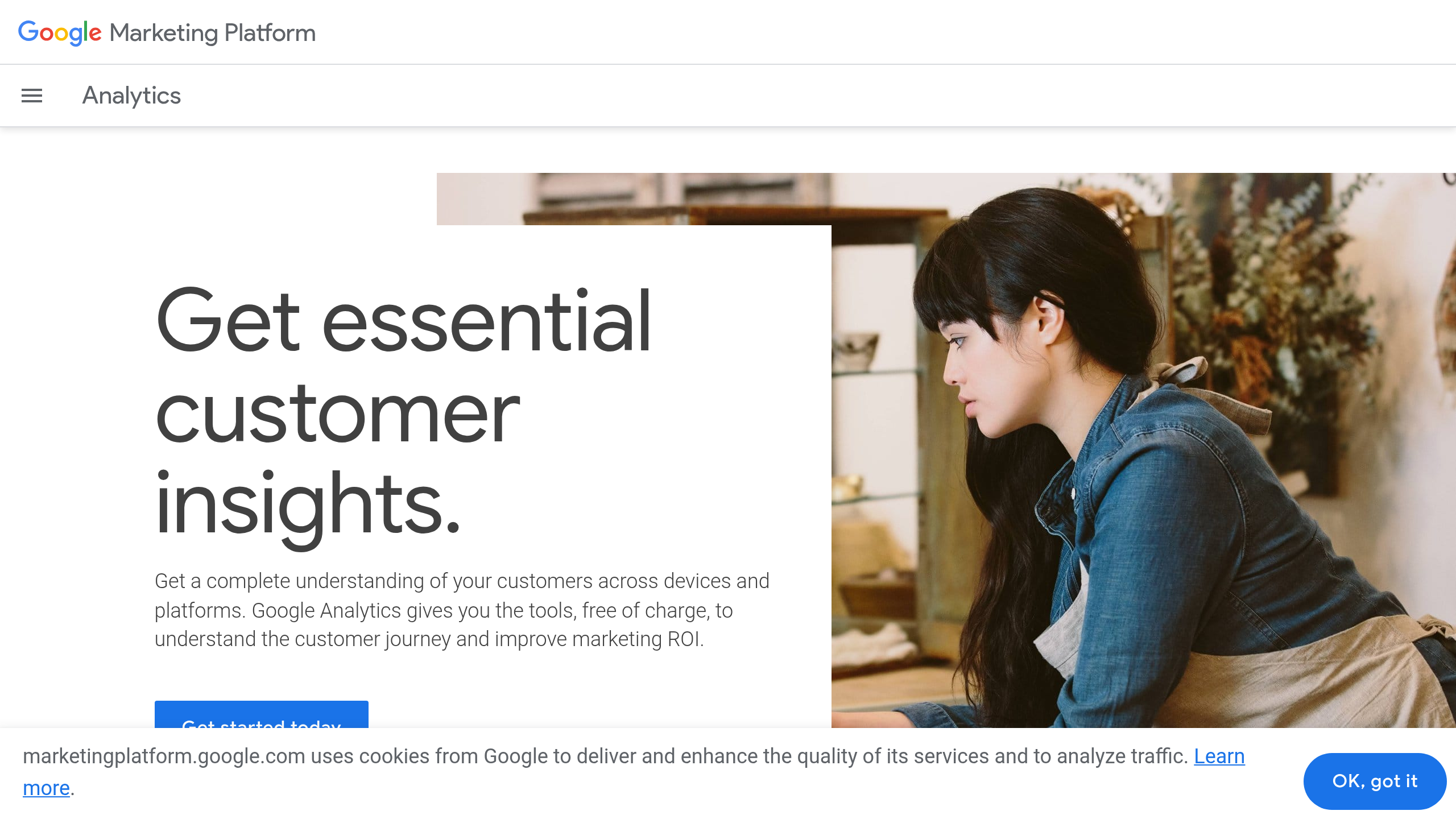
GA4 introduces an event-driven data model that allows for a more nuanced understanding of user behavior compared to previous versions.
Overview & Background: GA4 is built to adapt to the evolving digital landscape, offering enhanced tracking capabilities that cater to modern marketing needs.
Key Features:
1. Cross-platform Tracking: GA4 enables businesses to track user interactions across both web and app platforms, providing a holistic view of customer journeys.
2. Enhanced Reporting: The platform includes customizable dashboards and reports that help businesses focus on key performance indicators relevant to their goals.
3. Privacy-focused: With built-in features to help businesses comply with data privacy regulations, GA4 is designed with the future of analytics in mind.
How It Works: GA4 collects data through event tracking, allowing businesses to set up custom events tailored to their specific needs.
Pricing & Plans: Google Analytics 4 is free, making it an accessible solution for businesses of all sizes. Learn more about top GA4 alternatives. Learn more about top Google Analytics alternatives.
Best for: Product-focused teams looking to understand user engagement in-depth.
Mixpanel specializes in product analytics, providing deep insights into user interactions that can inform product development and marketing strategies.
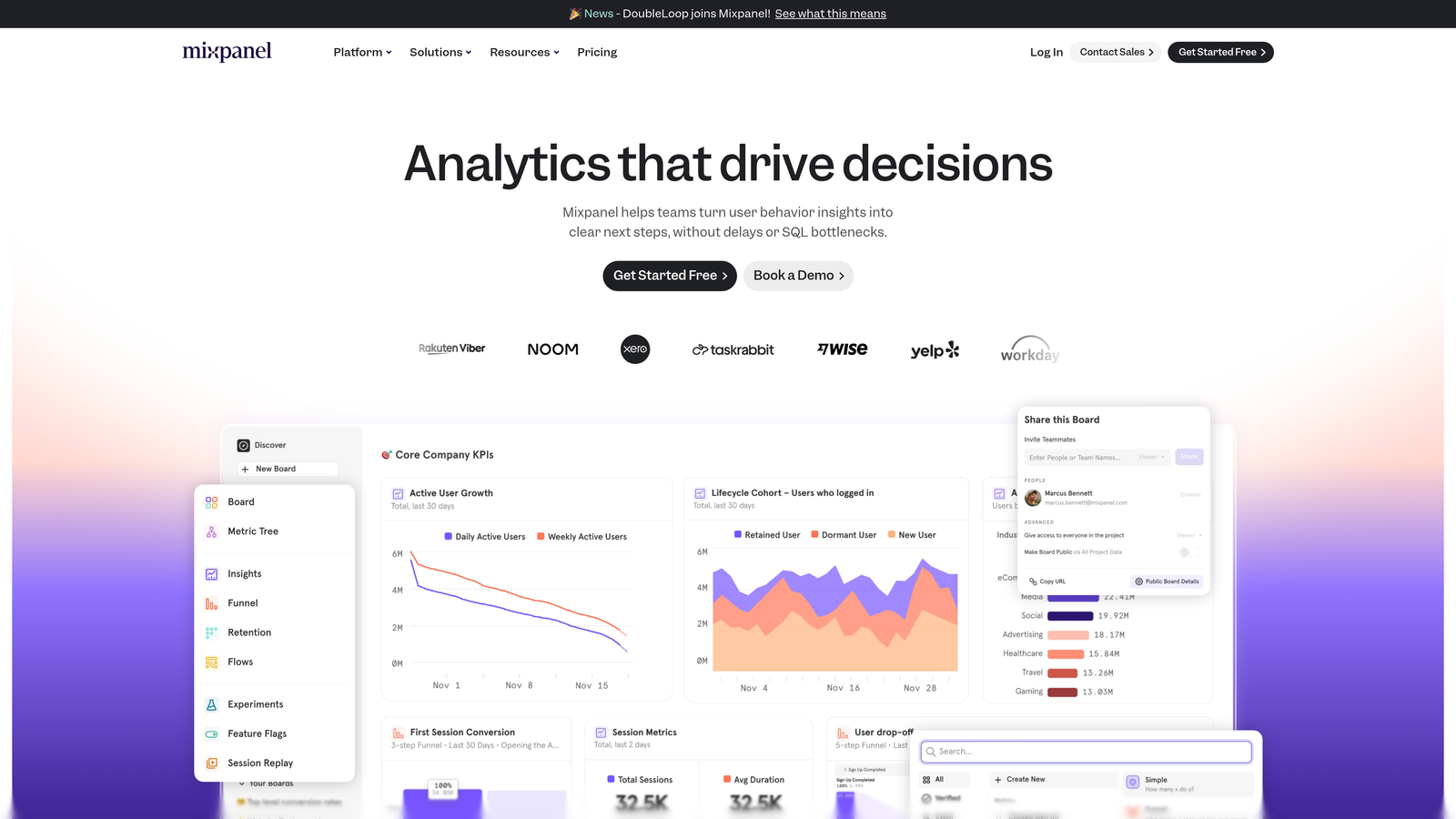
By focusing on user engagement, Mixpanel allows teams to refine their offerings based on actual user behavior.
Overview & Background: Mixpanel is designed for teams that prioritize understanding how users interact with their products, offering tools to analyze and optimize user journeys.
Key Features:
1. Cohort Analysis: This feature enables teams to track user behavior over time, identifying trends and patterns that can inform product decisions.
2. Funnel Analysis: Mixpanel allows users to create funnels to visualize the conversion process, helping to pinpoint drop-off points in user journeys.
3. A/B Testing: Users can experiment with different versions of a product or marketing message to determine what performs best.
How It Works: Mixpanel collects data on user actions, allowing for real-time analysis of user engagement and product performance.
Pricing & Plans: Mixpanel offers a free tier with limited features, as well as paid plans that scale with usage and feature needs. Learn more about top Mixpanel alternatives.
Why It’s Great for Product Teams: Its focus on user behavior provides product teams with the insights needed to make data-driven decisions about product development and user engagement strategies.
Best for: Understanding user behavior through visual analytics on websites.
Hotjar is a powerful tool designed to provide insights into how users interact with your website through visual data like heatmaps and session recordings.

By visualizing user behavior, Hotjar helps marketers and product teams make informed design decisions that enhance user experience.
Overview & Background: Hotjar combines qualitative data collection methods with quantitative analytics to create a comprehensive understanding of user behavior.
Key Features:
1. Heatmaps: Hotjar’s heatmaps visually represent where users click, scroll, and spend time on your site, revealing areas of interest and potential improvement.
2. Session Recordings: This feature allows teams to watch how users navigate through their site, providing insights into user experience and potential pain points.
3. Feedback Polls: Hotjar enables users to gather immediate feedback from visitors, helping to understand their needs and motivations.
How It Works: Hotjar captures user interactions on your site, providing data that can be analyzed to improve website performance and user satisfaction.
Pricing & Plans: Hotjar offers a free plan with essential features, as well as paid plans that unlock more advanced capabilities.
Why It’s Great for Marketers: Its emphasis on visualizing data helps teams understand what users are doing in real time, leading to immediate actionable insights.
Best for: Centralizing customer data from multiple sources.
Segment acts as a Customer Data Platform (CDP) that helps businesses unify their customer data from various sources, ensuring that all teams have access to the same information.

By centralizing data, Segment enables more accurate analytics and personalized marketing efforts.
Overview & Background: Segment simplifies data management by allowing businesses to collect, clean, and control customer data from multiple platforms.
Key Features:
1. Data Governance: Segment provides tools to manage and govern data, ensuring compliance and accuracy across all sources.
2. Integration Capabilities: The platform integrates with numerous marketing, analytics, and customer engagement tools, allowing for seamless data flow.
3. Personalization Features: Businesses can create personalized marketing experiences based on comprehensive customer data.
How It Works: Segment collects data from various channels and integrates it into a centralized platform, making it accessible for analysis and decision-making.
Pricing & Plans: Segment's pricing is tiered to accommodate businesses of all sizes, with options that scale as data needs grow.
Why It’s Great for Marketers: Centralizing customer data enhances marketing effectiveness by providing a single source of truth for insights and strategies.
Best for: SaaS companies looking to enhance user engagement through analytics and feedback.
Pendo combines product analytics with user feedback tools to help SaaS companies improve user engagement and satisfaction.

By integrating these elements, Pendo allows product teams to make informed decisions that enhance the user experience.
Overview & Background: Pendo is designed for teams that need to understand how users interact with their products and gather feedback to drive improvements.
Key Features:
1. In-app Messaging: Pendo allows teams to create in-app messages that guide users and encourage engagement with new features.
2. Analytics Dashboard: The platform offers a comprehensive dashboard that tracks user engagement metrics and product usage.
3. Feedback Tools: Pendo includes tools for collecting user feedback directly within the app, helping teams understand user needs and pain points.
How It Works: Pendo collects user interaction data within apps and combines it with feedback tools to provide a full view of user engagement.
Pricing & Plans: Pendo offers various pricing tiers based on features and user needs, making it suitable for startups and established enterprises alike.
Why It’s Great for Product Teams: Its dual focus on analytics and feedback ensures that product teams can continuously improve user experiences based on real data.
Best for: Marketers focused on conversion tracking and customer behavior analysis.
Kissmetrics is designed to help marketers track customer behavior and conversion rates, providing insights that connect data to marketing strategies.

With its focus on conversions, Kissmetrics helps teams optimize their marketing efforts to drive better results.
Overview & Background: Kissmetrics focuses on providing detailed insights into how marketing efforts translate to conversions, making it a key tool for marketers.
Key Features:
1. Cohort Reports: Kissmetrics allows users to segment customers into cohorts, helping to analyze behavior trends over time.
2. Funnel Tracking: This feature enables teams to visualize the customer journey and identify where potential drop-offs occur.
3. Custom Goals: Users can set specific goals within Kissmetrics to track conversions relevant to their business objectives.
How It Works: Kissmetrics collects data on user actions and provides analytics that help marketers understand the effectiveness of their campaigns.
Pricing & Plans: Kissmetrics offers tiered pricing that caters to both small businesses and larger enterprises, ensuring flexibility based on user needs. Learn more about top Kissmetrics alternatives.
Why It’s Great for Marketers: By focusing on conversion tracking, Kissmetrics helps marketers make informed decisions that enhance campaign effectiveness.
Best for: Teams needing quick setup for automatic data capture without extensive coding.
Heap captures every user action automatically, simplifying data analysis and enabling teams to focus on insights rather than setup.
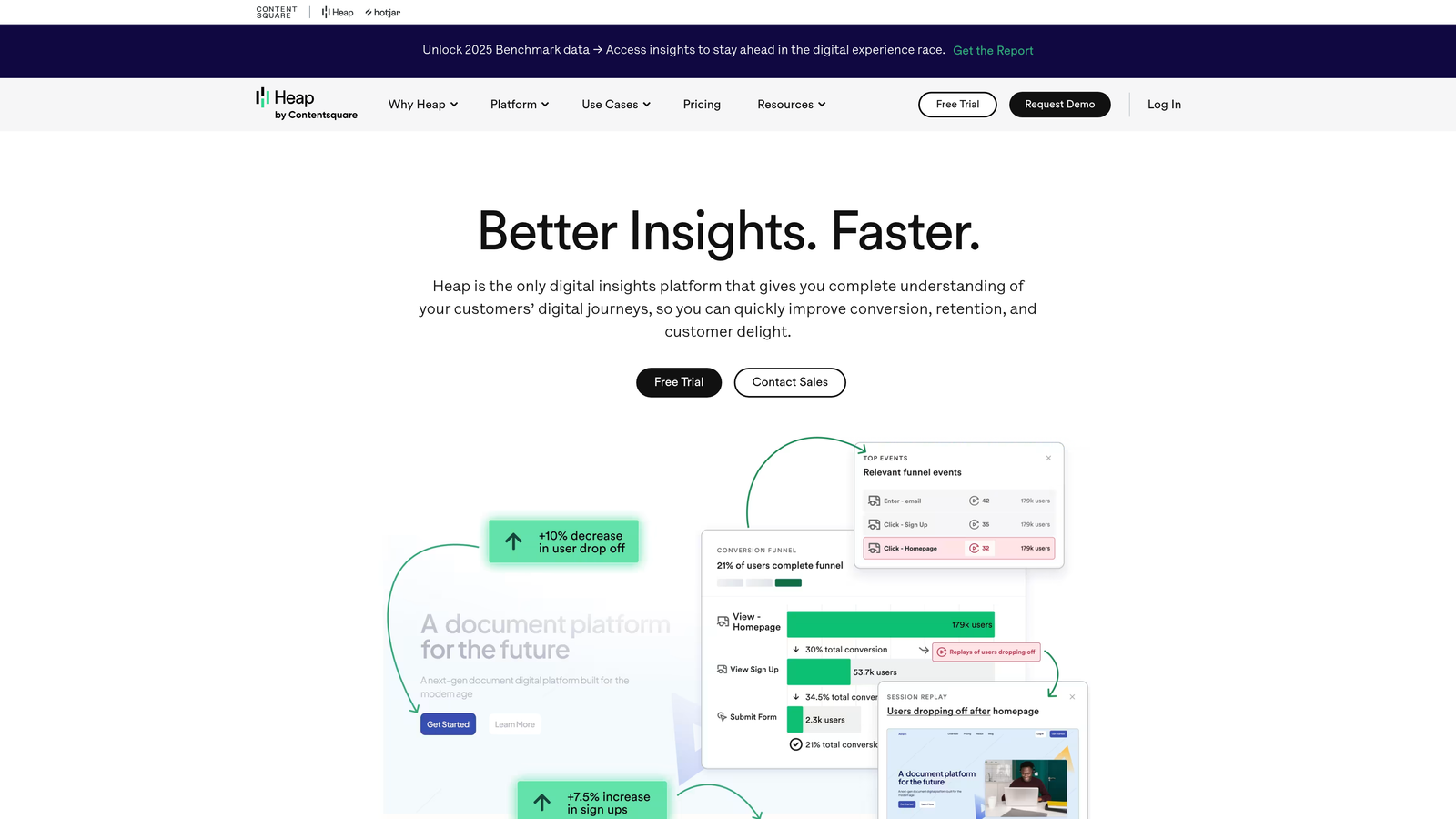
With its automatic event tracking, Heap allows teams to analyze user behavior quickly and efficiently.
Overview & Background: Heap is designed for teams that want to leverage data without the burden of extensive manual tracking setups.
Key Features:
1. Automatic Event Tracking: Heap’s standout feature captures all user actions automatically, allowing for comprehensive analysis.
2. Visualizations: The platform provides visual representations of data that simplify the interpretation of user behavior.
3. Retroactive Data Analysis: Users can analyze data from any time period, making it easy to uncover insights without prior setup.
How It Works: Heap collects data automatically as users interact with your site, providing insights that can be analyzed in real-time.
Pricing & Plans: Heap offers various pricing models based on data needs, making it scalable for businesses of all sizes.
Why It’s Great for Teams: Its ease of use and automatic tracking capabilities reduce the burden of manual setup, allowing teams to focus on deriving insights.
Best for: Product teams seeking advanced analytics for user engagement and retention.
Amplitude is a product analytics tool designed to help teams analyze user engagement and retention metrics effectively.
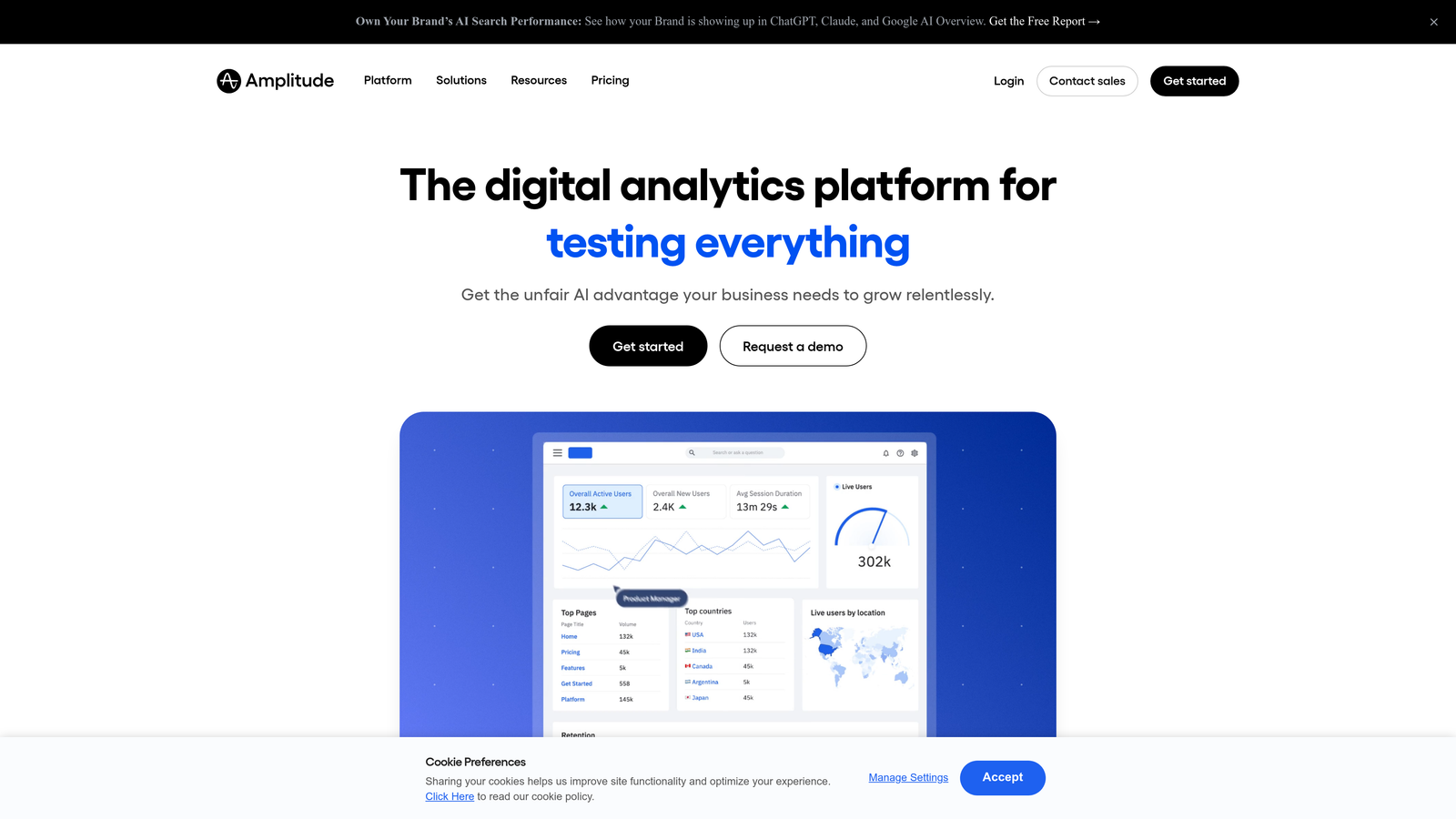
With its powerful analytics capabilities, Amplitude allows product teams to make data-driven decisions that enhance user experiences.
Overview & Background: Amplitude focuses on providing insights into user behavior, helping teams understand what keeps users engaged.
Key Features:
1. Behavioral Cohorts: Amplitude allows teams to segment users based on their behavior, providing insights into engagement patterns.
2. Retention Analysis: The platform offers tools to analyze user retention over time, helping teams understand how to keep users engaged.
3. Path Analysis: Users can visualize the paths taken by customers to identify common behaviors and optimize user journeys.
How It Works: Amplitude collects data on user interactions, allowing teams to analyze engagement and retention metrics effectively.
Pricing & Plans: Amplitude offers flexible pricing options based on usage, making it suitable for various business sizes and needs. Learn more about top Amplitude alternatives.
Why It’s Great for Product Teams: Its focus on engagement and retention metrics provides product teams with the insights needed to enhance user experiences and drive product success.
Best for: Businesses prioritizing data privacy and open-source analytics solutions.
Matomo is an open-source web analytics platform that provides users with complete control over their data.
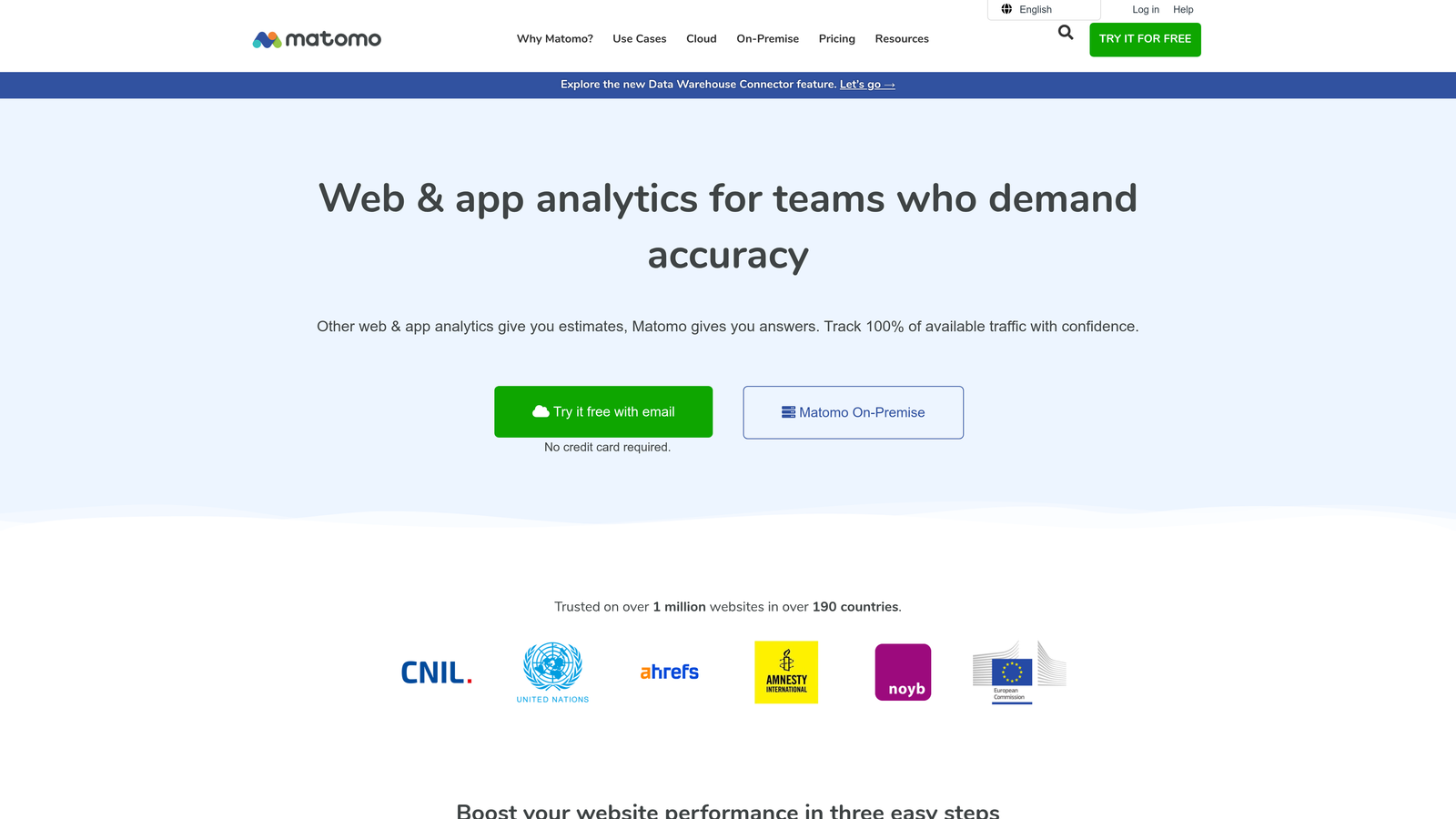
By emphasizing data privacy and customization, Matomo offers a unique alternative to traditional analytics tools.
Overview & Background: Matomo enables businesses to track user interactions while ensuring compliance with data privacy regulations.
Key Features:
1. Data Ownership: Unlike many analytics platforms, Matomo allows users to host their own data, ensuring complete control and privacy.
2. Customizable Dashboard: Users can tailor their analytics dashboard to reflect the metrics that matter most to their business.
3. Integration Capabilities: Matomo integrates with various marketing tools, allowing for a comprehensive view of user interactions.
How It Works: Matomo collects data from websites and apps, providing insights that can be analyzed to improve user experiences.
Pricing & Plans: Matomo offers a free version with basic features, as well as paid options for more advanced capabilities.
Why It’s Great for Privacy-Conscious Businesses: Its focus on data ownership and privacy makes Matomo an ideal choice for companies that prioritize compliance and data security.
The world of analytics is vast and complex, with numerous tools available that can enhance your understanding of customer behavior and marketing effectiveness. Each of the alternatives to Woopra discussed offers unique strengths that cater to different business needs. From Cometly’s comprehensive attribution insights to Google Analytics 4’s seamless integration with existing Google products, the right tool can significantly impact your marketing strategy.
As you consider your options, take the time to assess the specific features that align with your business goals. Whether you prioritize comprehensive data tracking, user engagement analysis, or data privacy, there’s a solution that fits your needs. We encourage you to explore these alternatives and
Learn how Cometly can help you pinpoint channels driving revenue.
.svg)
Network with the top performance marketers in the industry